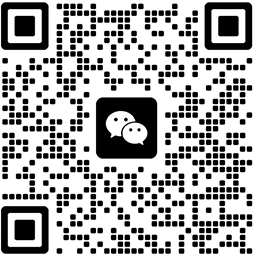今天将给大家带来《如何通过循环 JSON 显示 golang 中丢失的键?》,感兴趣的朋友请继续看下去吧!以下内容将会涉及到等等知识点,如果你是正在学习Golang或者已经是大佬级别了,都非常欢迎也希望大家都能给我建议评论哈~希望能帮助到大家!
问题内容
我正在为我的应用程序构建一个翻译工具。我有 2 个不同的 json 文件(en.json、fr.json),其中包含我的键和值。
en.json 文件是引用文件,这意味着如果该文件中存在的键不存在,则需要将其添加到 fr.json 文件中。 有关更多详细信息,如果密钥存在于 en.json 中而不是存在于 fr.json 中,我们需要显示,但如果密钥仅存在于 fr.json 中,则它不算在内,我们不会在屏幕上显示任何内容。如果密钥已经存在于两者中,我们不需要在屏幕上显示任何内容。
en.json 文件是具有以下键的引用文件:
{
"i18n-outterjson": {
"i18n-value1": "value1",
"i18n-value2": "value2",
"i18n-dad" : "dady"
},
"innerjson2":"nonevalue",
"hello" : "good morning",
"onlykey" : "only key",
"secondekey" : "second key",
"mother": {
"daugther": "fille"
}
}
fr.json 文件是目标文件。使用以下键:
{
"i18n-outterjson": {
"i18n-value1": "value1",
"i18n-value2": "value2"
},
"i18n-hello" : "bonjour",
"i18n-variation" : "variation",
"alouette" : "cacahouete",
"innerjson2":"pas de valeur",
"hello" : "bonjour"
}
我在 golang 中的代码是:
fileenglish := getallpathreffile(); // to open the reference file
files := getalli18nfiles(); // to open the french file
for _, fileref := range fileenglish {
mapref := readjsonfile(constants.pathreffile + getridofextension(fileref.name()))
for _, filetarget := range files {
maptarget := readjsonfile(constants.i18npath + getridofextension(filetarget.name()));
maptarget = missingkey(mapref, maptarget)
// range loop to identify the missing keys in the different files
for key, _ := range mapref { // mapref is the reference map of the reference file en.json
if mapref[key] != maptarget[key] { // maptarget is map of the target file fr.json
t := strings.replace(key, key, "", -1)
_ = t
fmt.println("the missing keys are: ", key)
}
}
}
}
我尝试比较每个键,在某些情况下我们有一个层次结构,我尝试识别丢失的键。 我需要获得这个结果:
i18n-dad
mother
daughter
onlykey
secondekey
但是使用我当前的代码,我遇到了这个错误:comparing uncomparable type map[string]interface {}。
如何正确识别按键并将其打印在屏幕上?
解决方案
下面是一个简单示例,使用 https://GitHub.com/go-test/deep 展示了法语 json 中缺少的内容。
package main
import (
"encoding/json"
"fmt"
"strings"
"github.com/go-test/deep"
)
type data struct {
i18noutterjson struct {
i18nvalue1 string `json:"i18n-value1"`
i18nvalue2 string `json:"i18n-value2"`
i18ndad string `json:"i18n-dad"`
} `json:"i18n-outterjson"`
innerjson2 string `json:"innerjson2"`
hello string `json:"hello"`
onlykey string `json:"onlykey"`
secondekey string `json:"secondekey"`
mother struct {
daugther string `json:"daugther"`
} `json:"mother"`
}
func main() {
enjson := []byte(`{"i18n-outterjson":{"i18n-value1":"value1","i18n-value2":"value2","i18n-dad":"dady"},"innerjson2":"nonevalue","hello":"good morning","onlykey":"only key","secondekey":"second key","mother":{"daugther":"fille"}}`)
frjson := []byte(`{"i18n-outterjson":{"i18n-value1":"value1","i18n-value2":"value2"},"i18n-hello":"bonjour","i18n-variation":"variation","alouette":"cacahouete","innerjson2":"pas de valeur","hello":"bonjour"}`)
var en, fr data
err := json.unmarshal(enjson, &en)
if err != nil {
panic(err)
}
err = json.unmarshal(frjson, &fr)
if err != nil {
panic(err)
}
diff := deep.equal(en, fr)
for _, d := range diff {
if strings.hassuffix(d, "!= ") {
fmt.printf("%s\n", d)
}
}
}
$ go run .
i18noutterjson.i18ndad: dady !=
onlykey: only key !=
secondekey: second key !=
mother.daugther: fille !=
根据评论进行编辑。添加一种使用任意 json 而不是结构的方法。
func witharbitraryjson(enjson []byte, frjson []byte) {
var en map[string]interface{}
err := json.unmarshal(enjson, &en)
if err != nil {
panic(err)
}
var fr map[string]interface{}
err = json.unmarshal(frjson, &fr)
if err != nil {
panic(err)
}
diff := deep.equal(en, fr)
for _, d := range diff {
if strings.hassuffix(d, "!= <does not have key>") {
fmt.printf("%s\n", d)
}
}
}
输出:
$ go run .
map[i18n-outterJSON].map[i18n-dad]: dady != <does not have key>
map[onlykey]: only key != <does not have key>
map[secondekey]: second key != <does not have key>
map[mother]: map[daugther:fille] != <does not have key>
文中关于的知识介绍,希望对你的学习有所帮助!


